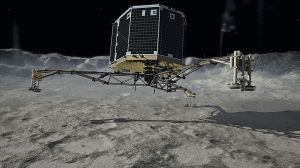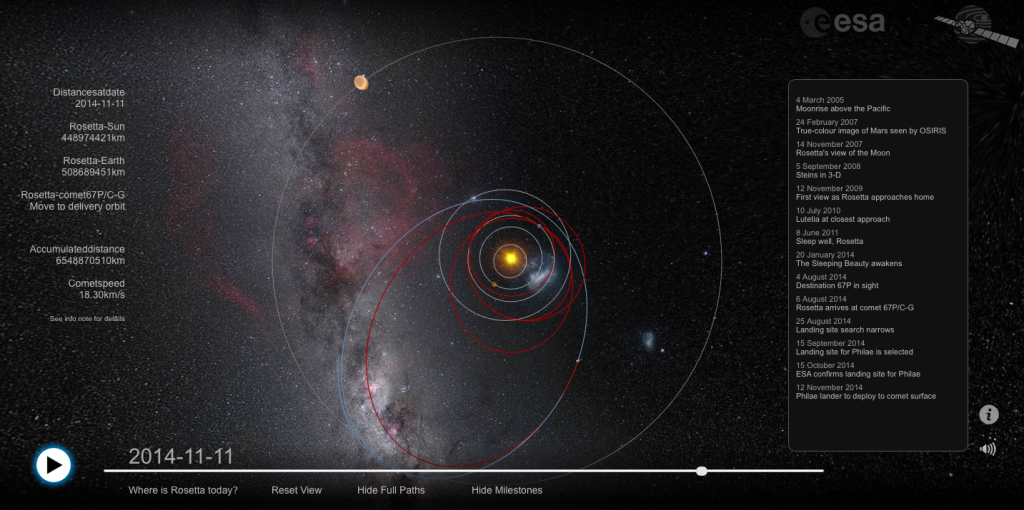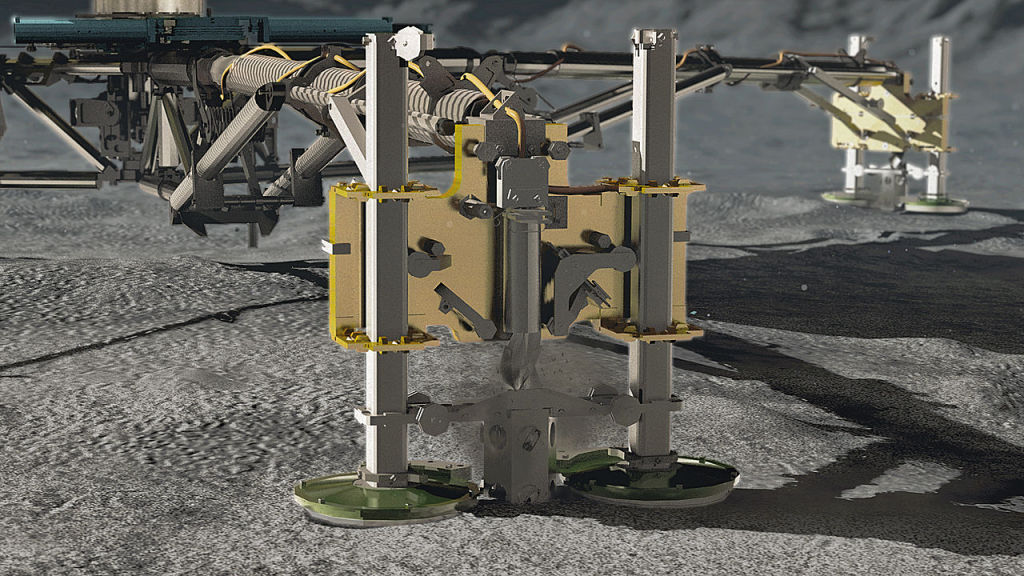
Image: Wikimedia
Tomorrow (November 12, 2014), the Philae robotic lander will detach from the parent spacecraft, Rosetta, and begin its short trip to the surface of comet 67P/Churyumov–Gerasimenko. This is a big step in technology and spaceflight! I'm sure we'll hear lots of fascinating new discoveries in the coming weeks, but before the lander detaches I wanted to point out how amazing this mission already is and a few things that it has already taught us.
First, let's talk about distance and speed. Space often confounds us with mind-boggling distances, sizes, and speeds. Rosetta was launched in 2004 and made a few loops in the inner solar-system to use gravitational acceleration to help it get out past Mars. As of this writing, Rosetta was about 315 million miles away from Earth, having actually travelled much further (map below). It is orbiting a small body (a comet) that is traveling at about 44,700 miles per hour (20 km/s). It is also orbiting very low to the comet, only about 19 miles (30 km) off the surface.
In the morning, at about 3:35 AM Eastern Time, the Philae probe will detach from the orbiter and begin the seven hour journey to a landing on the comet's surface. Not only is landing on a moving target far from home difficult, but it is made even more difficult by the small size of the comet. We know that small bodies exert less gravitational attraction on other objects (it's directly proportional to the mass if you remember the Law of Gravitation). Small masses are normally good, because it means that we don't have to be going as fast to escape the gravitational influence of the planet. For example, the escape velocity of Earth is about 25,000 miles per hour (11.2 km/s), while the escape velocity of the moon is only about 5,400 miles per hour (2.4 km/s). The escape velocity of the comet is only about 1.1 miles per hour (0.5 m/s)! Since the spacecraft is descending at about 1 m/s, this presents a problem: it would likely touch the comet, then bounce off, never to be seen again.
To solve the landing problem, Philae has legs with a strong suspension system that utilizes the impact energy to drive ice-screws into the surface. For additional security, two harpoons will be fired into the surface as well.
Once on the comet, the suite of 10 instruments will begin to collect data about the magnetic field, composition, and other parameters. I'm sure the team will have many fascinating discoveries to share, but in the interest of keeping this post short, I'd like to share one result we already have.
Rosetta has been, and will continue, to collect data from orbit with radar units, cameras, magnetometers, and spectrometers. As Rosetta began to get close, scientists noticed a periodic variation in the magnetic field around the comet. These variations are very low in frequency, about 40-50 milli-Hertz. We can't hear anything that low in frequency, but if you artificially bump up the frequency so we can listen to the data, you get the following:
What is most fascinating about this is that it was totally unexpected! Scientists are unsure of the cause. This is one of the many puzzles that Rosetta and Philae will reveal, along with a few of the answers. Best of luck to the team. We'll check in on the spacecraft again in the future and see what we've learned.
One last note: even traveling at the speed of light, the radio signal confirming the spacecraft status will take about 30 minutes to travel from Philae to us! Be sure to watch live tomorrow (here).



One response to “315 Million Miles From Home, Cold, and Landing on a Ball of Ice”